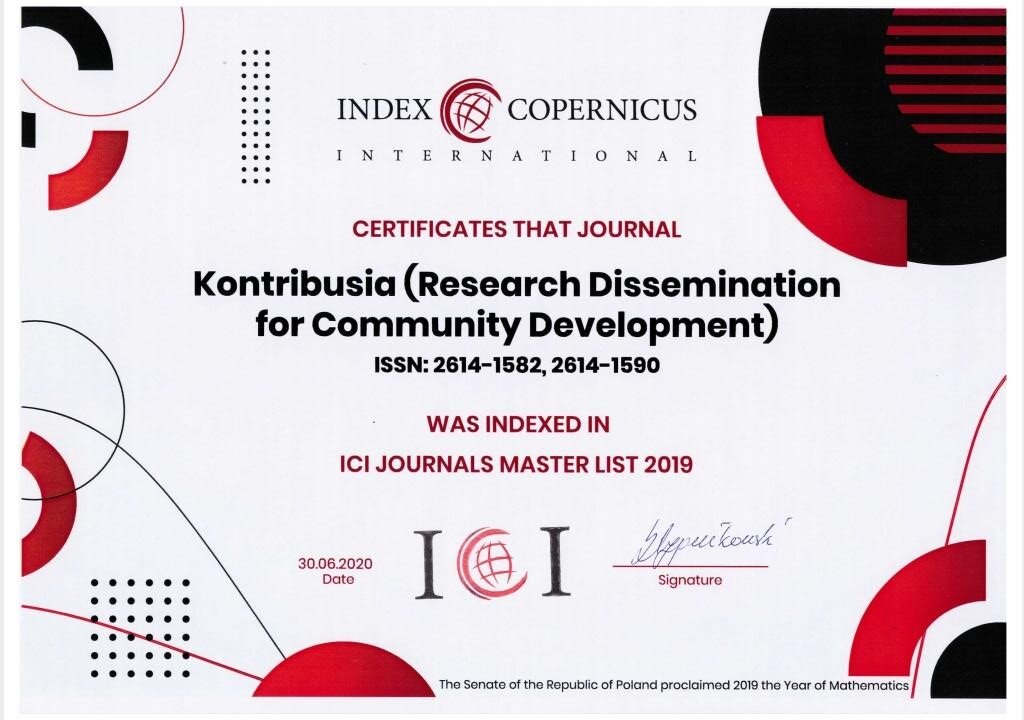Decreasing Energy and Nutrient Intake During Hospitalization In Muhammadiyah Lamongan Hospital
DOI:
https://doi.org/10.30587/kontribusia.v5i1.3041Keywords:
Malnutrition, intake, patient, hospitalizationAbstract
Inpatient Malnutrition rates are quite high and distributed in almost all hospitals for all types of diseases and socio-economic sufferers. This study aims to examine the nutritional status, total patient intake, and factors that influence the total intake of newly hospitalized patients at Muhammadiyah Lamongan Hospital. The study was conducted from November to December 2019 in the internal, surgical, and Obgyn departments of the Muhammadiyah Lamongan Hospital. A total of 80 patients were selected as samples using the accidental sampling technique. The results showed that 87.5% of patients were hospitalized due to non-communicable diseases such as diabetes mellitus, acute and chronic kidney failure, cirrhosis, acute myocardial infark, and others. Only 12.5% are treated for infectious diseases such as tuberculosis, meningitis, diarrhea, and others. Calculation of BMI in patients shows that 10% of patients are obese, 30% are overweight, 50% are normal and 10% are malnourished. 24-hour recall results showed that 100% of patients could not meet energy and nutrient requirements (<80% of energy and nutrient demand figures). The average patient is only able to meet 24% of energy, 17% protein, 24% carbohydrates, and 18% fat. As many as 35% of patients complained of nausea and 22.5% of them were accompanied by vomiting. The number of patients said that decreased appetite because abdominal pain (35%), 25% patients experienced shortness of breath. Many patients complained that their bodies were weak / without strength (95%). Appetite also decreased due to difficulty chewing (17.5%) and difficulty swallowing (22.5%). Physical conditions like weakness accompanied by other eating disorders can be the cause of the patient's decreased food intake. This has led to a decrease in nutritional status in patients due to inadequate energy and nutrient need (especially those who have to go through a long period of hospitalization).









